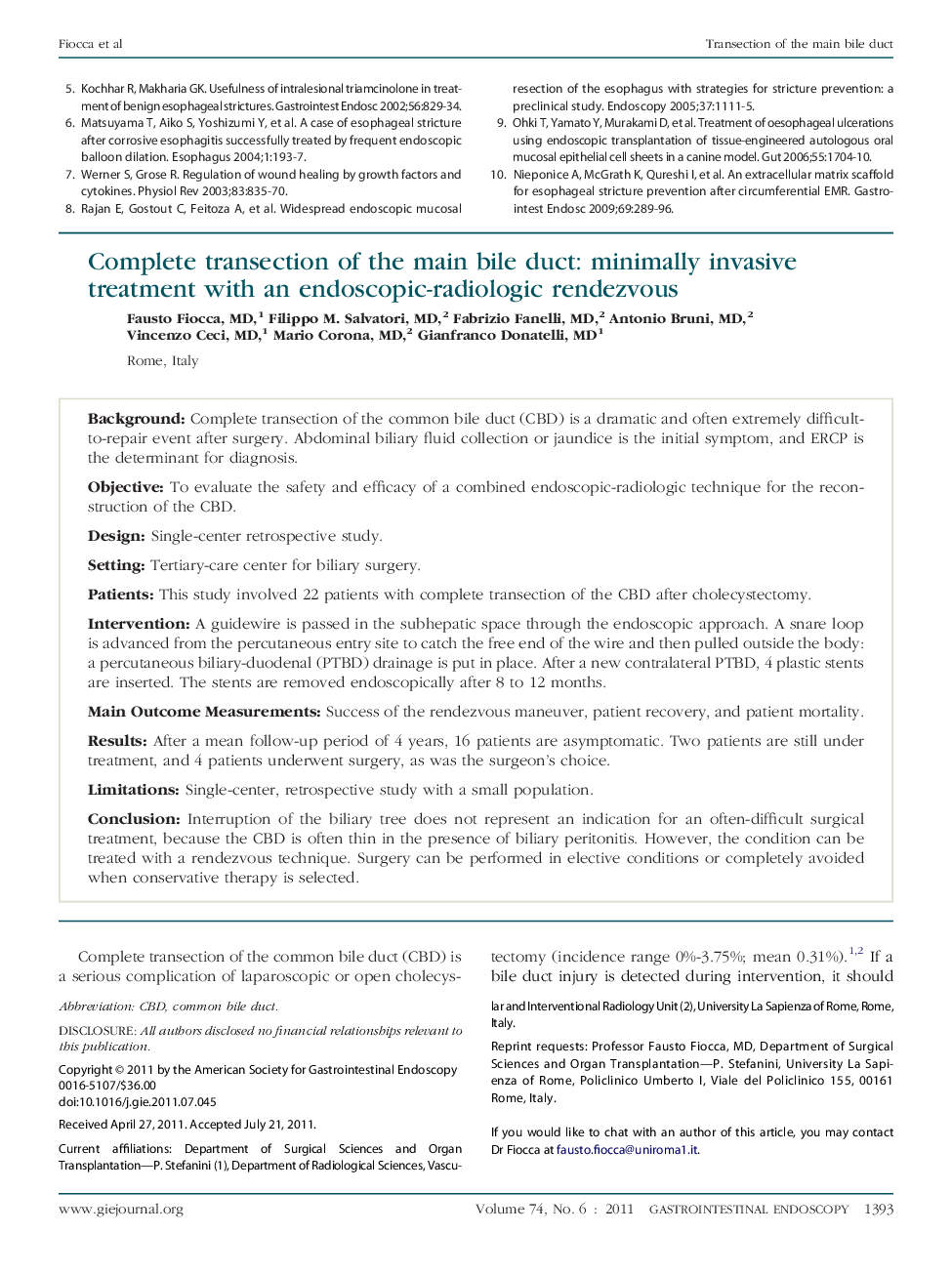| Article ID | Journal | Published Year | Pages | File Type |
|---|---|---|---|---|
| 3305072 | Gastrointestinal Endoscopy | 2011 | 6 Pages |
BackgroundComplete transection of the common bile duct (CBD) is a dramatic and often extremely difficult-to-repair event after surgery. Abdominal biliary fluid collection or jaundice is the initial symptom, and ERCP is the determinant for diagnosis.ObjectiveTo evaluate the safety and efficacy of a combined endoscopic-radiologic technique for the reconstruction of the CBD.DesignSingle-center retrospective study.SettingTertiary-care center for biliary surgery.PatientsThis study involved 22 patients with complete transection of the CBD after cholecystectomy.InterventionA guidewire is passed in the subhepatic space through the endoscopic approach. A snare loop is advanced from the percutaneous entry site to catch the free end of the wire and then pulled outside the body: a percutaneous biliary-duodenal (PTBD) drainage is put in place. After a new contralateral PTBD, 4 plastic stents are inserted. The stents are removed endoscopically after 8 to 12 months.Main Outcome MeasurementsSuccess of the rendezvous maneuver, patient recovery, and patient mortality.ResultsAfter a mean follow-up period of 4 years, 16 patients are asymptomatic. Two patients are still under treatment, and 4 patients underwent surgery, as was the surgeon's choice.LimitationsSingle-center, retrospective study with a small population.ConclusionInterruption of the biliary tree does not represent an indication for an often-difficult surgical treatment, because the CBD is often thin in the presence of biliary peritonitis. However, the condition can be treated with a rendezvous technique. Surgery can be performed in elective conditions or completely avoided when conservative therapy is selected.
